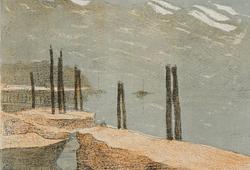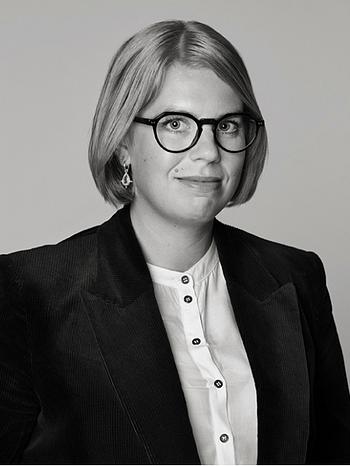Henry Moore
"Mother & Child: Fragment"
Signed and numbered 3/9. Conceived in 1956. Cast in 1976. Sculpture, bronze, height 16.6 cm including stone base.
Import VAT
Import VAT (12%) will be charged on the hammer price on this lot. For further details please contact customer service +46 8-614 08 00.
Provenance
Connaught Brown, London.
Private collection, purchased by the current owner from the above on October 13, 1995.
Literature
A. Bowness (ed.), "Henry Moore, Sculpture and drawings, Sculpture 1955-64, vol. III", London, 1986, no. 409b, p. 29 (another example illustrated).
More information
"The 'Mother and child' idea is one of my two or three obsessions ... But the subject itself is eternal and unending, with so many sculptural possibilities in it – a small form in relation to a big form, the big form protecting the small one, and so on. It is such a rich subject, both humanly and compositionally, that I will always go on using it" (Henry Moore, "Henry Moore: Drawings 1969-79", Wildenstein, New York, 1979, p. 29).
Moore was a student when he made his first sketch depicting a mother and child in 1921-22. He quickly realized the richness of the motif, both on a human and a formal level, and it became an artistic obsession that he explored throughout his life. In his later years, Moore's interest in the theme overshadowed all others and was translated into works characterized by his inventiveness.
"From very early on I had an obsession with the mother and child theme – it has been a universal theme from the beginning of time and some of the earliest sculptures we've found from the Neolithic Age are of a mother and child. I discovered, when drawing, I could turn every little scribble, blot or smudge into a mother and child" (Henry Moore and John Hedgecoe, "Henry Moore, My Ideas, Inspiration and Life as an Artist", Ebury Press, London, 1986, p. 155).
The relationship between mother and child is often associated with notions of love, protection, and nourishment, but Moore's treatment of the theme reveals a more nuanced understanding. In the auction's work, Moore has reduced the forms to fragments, as the title suggests. As a viewer, one can recognize the feeling of reaching out to one's child or, as a child, reaching out for a mother's embrace.
Artist
Henry Moore (1898-1986) was a prominent British sculptor and artist who played a crucial role in the development of modern sculpture. His contributions to the art world are exceptional, and his works have had a lasting impact on art history.
Henry Moore was born in Castleford, Yorkshire, and showed an early passion for art. After serving in World War I, he studied at the Leeds School of Art and later at the Royal College of Art in London. It was here that he began exploring forms and materials that would define his artistic career.
Moore was strongly influenced by artists such as Pablo Picasso and Constantin Brancusi. He was also interested in non-Western art and sculpture traditions, particularly African and Oceanic art. These influences shaped Moore's unique style and his interest in exploring abstract forms and the representation of the human body.
One of the most prominent features of Moore's work is his fascination with the human figure. He experimented with abstracting and distorting the body to create sculptures that express a sense of movement, balance, and harmony. His sculptures often display rounded and organic forms, drawn from nature and the landscape around him.
Moore used a range of materials for his works, including stone, bronze, and wood. He was skilled at harnessing the properties of these materials, giving them a sense of life and movement. His sculptures often have a monumental scale and a presence that impacts the surrounding environment.
Throughout his career, Henry Moore also created many public artworks and monuments around the world. His works can be found in parks, museums, and urban environments worldwide, becoming icons of modern art. One example is his famous sculpture "Reclining Figure" (1951) located in The Art Institute of Chicago. This work has become a symbol of Moore's style and his contribution to the world of sculpture.
Henry Moore's influence extends far beyond his own work. He taught at several art institutions, inspiring an entire generation of young artists. His vision that sculpture can be both abstract and emotionally powerful continues to influence the art world.
Read more



























